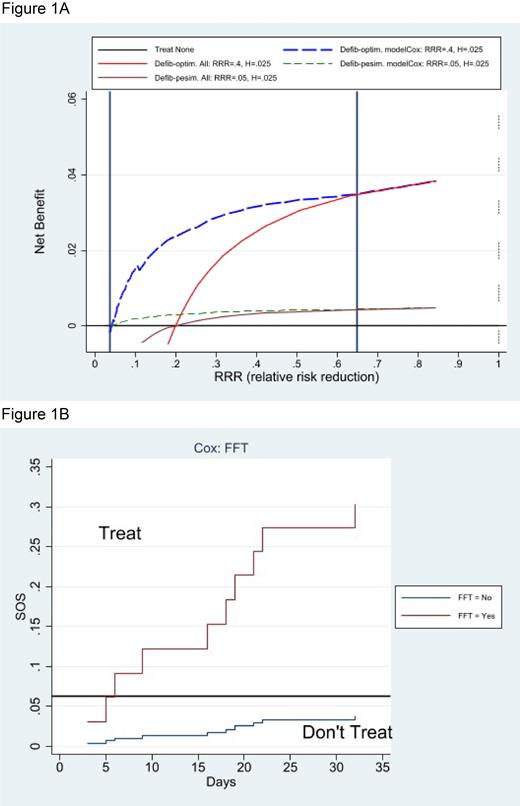Background: We have previously reported that the predictive model based on 3 biomarkers [L-ficolin, hyaluronic acid (HA), and stimulation 2 (ST2)] can accurately stratify the risk of sinusoidal obstruction syndrome (SOS) in high (>30%) vs low (<5%) risk groups [ JCI Insight. 2023; 8(10):e168221]. However, the improved risk stratification for SOS does not necessarily help guide the administration of the risk-adapted preemptive therapy. Here we set out to assess the clinical utility of the SOS model by integrating its prediction with the consequences (benefits and harms) of preemptive treatment with defibrotide.
Methods: We used the data set from the prospective evaluation of the accuracy of the SOS predictive model. We have reformulated the SOS predictive model as a simple fast-and-frugal (FFT) decision tree. FFT consisted of sequentially ordered cues of 3 biomarkers [L-ficolin, HA, and ST2] via a series of binary (yes/no) classification decisions according to the optimal cutpoints chosen by Youden's index. After assessing the model's performance (discrimination, calibration) we applied a generalized decision curve analysis (gDCA) to integrate the effects of treatments with the predictive accuracy of the model. This, in turn, allowed us to develop individualized recommendations for the use of preemptive treatment of SOS with defibrotide. We calculated net benefits (NB) to compare 3 management strategies: don't provide any treatment vs. administer prophylaxis to all patients undergoing allo-transplant vs. use the SOS model to guide the preemption treatment with defibrotide. According to gDCA the best treatment is the one with the highest net benefits. We informed gDCA analysis using data from the published randomized trial comparing defibrotide vs. placebo treatment effects [ Lancet. 2012; 379 :1301]. Adverse events (AE) were seen in 2.5% more patients compared with placebo, and defibrotide reduced the risk of SOS by 40% (=relative risk reduction [RRR]).
Results: The model had a good performance characteristic. Harell's C discrimination statistics was 0.77 with good calibration properties (with intercept and the slope not statistically significantly different from 0 and 1, respectively). Assuming AE of 2.5%, offering prophylaxis to all patients with defibrotide represents the best management strategy for very large RRR (>65%). Similarly, for RRR<2.5%, no prophylaxis should be offered. For all other values of treatment effects (ranging from RRR 2.5% to 65%), relying on the SOS model represents the best strategy to guide the use of defibrotide preemptively (Figure 1A). Assuming the baseline treatment values [AE=2.5%, RRR=40%], the SOS model almost perfectly individualizes the use of prophylaxis: all patients with a risk of SOS>6.25% should be given prophylaxis, otherwise not (Figure 1B). However, the risk threshold was sensitive to the assumptions about defibrotide treatment effects.
Conclusion: The SOS biomarker-based model offers a new method to guide risk-adapted prophylactic or preemptive therapy for SOS.
Disclosures
Paczesny:Indiana University Research and Technology Corporation: Patents & Royalties: Biomarkers and assays to detect chronic graft versus host disease (U.S. Patent 10,571,478 B2).


This feature is available to Subscribers Only
Sign In or Create an Account Close Modal